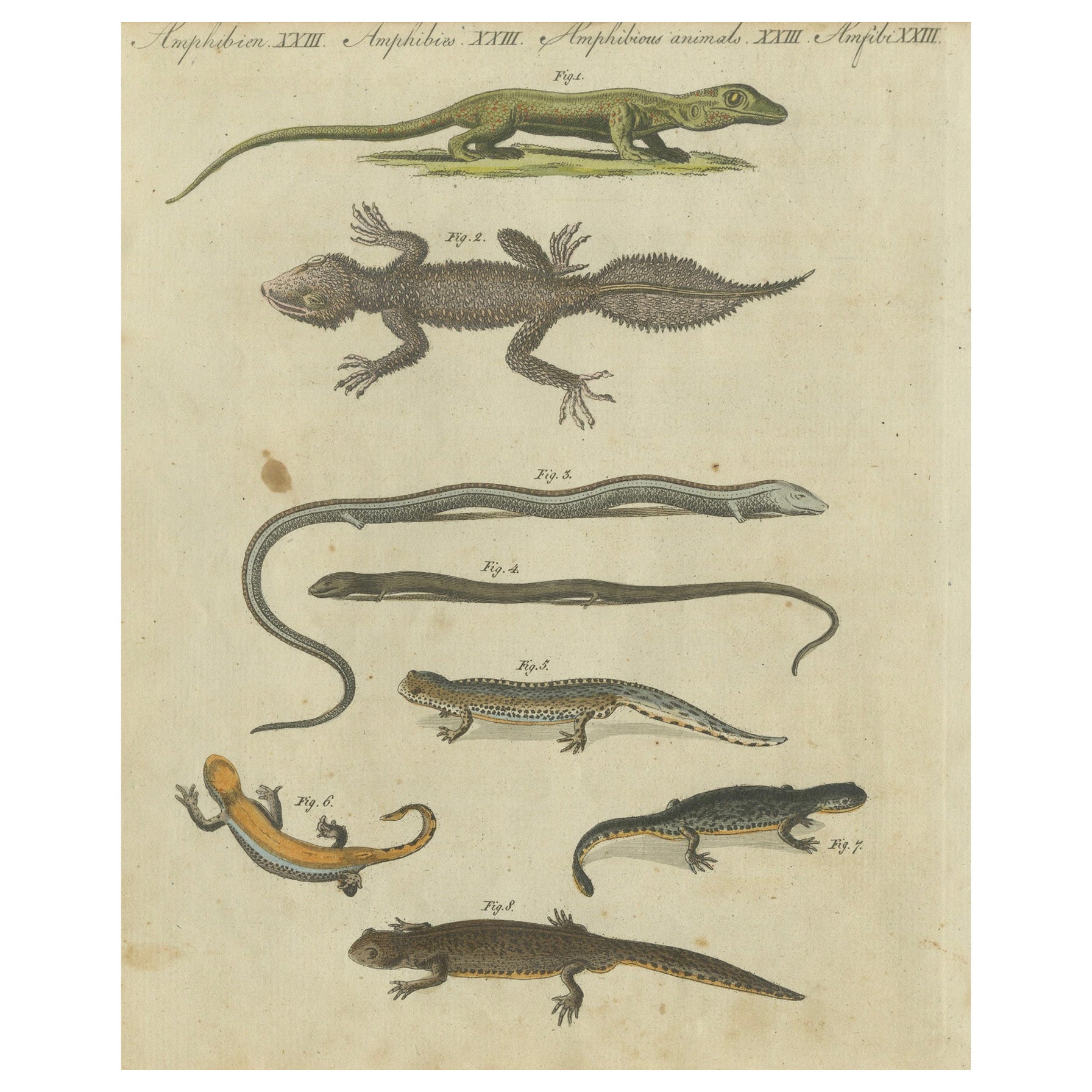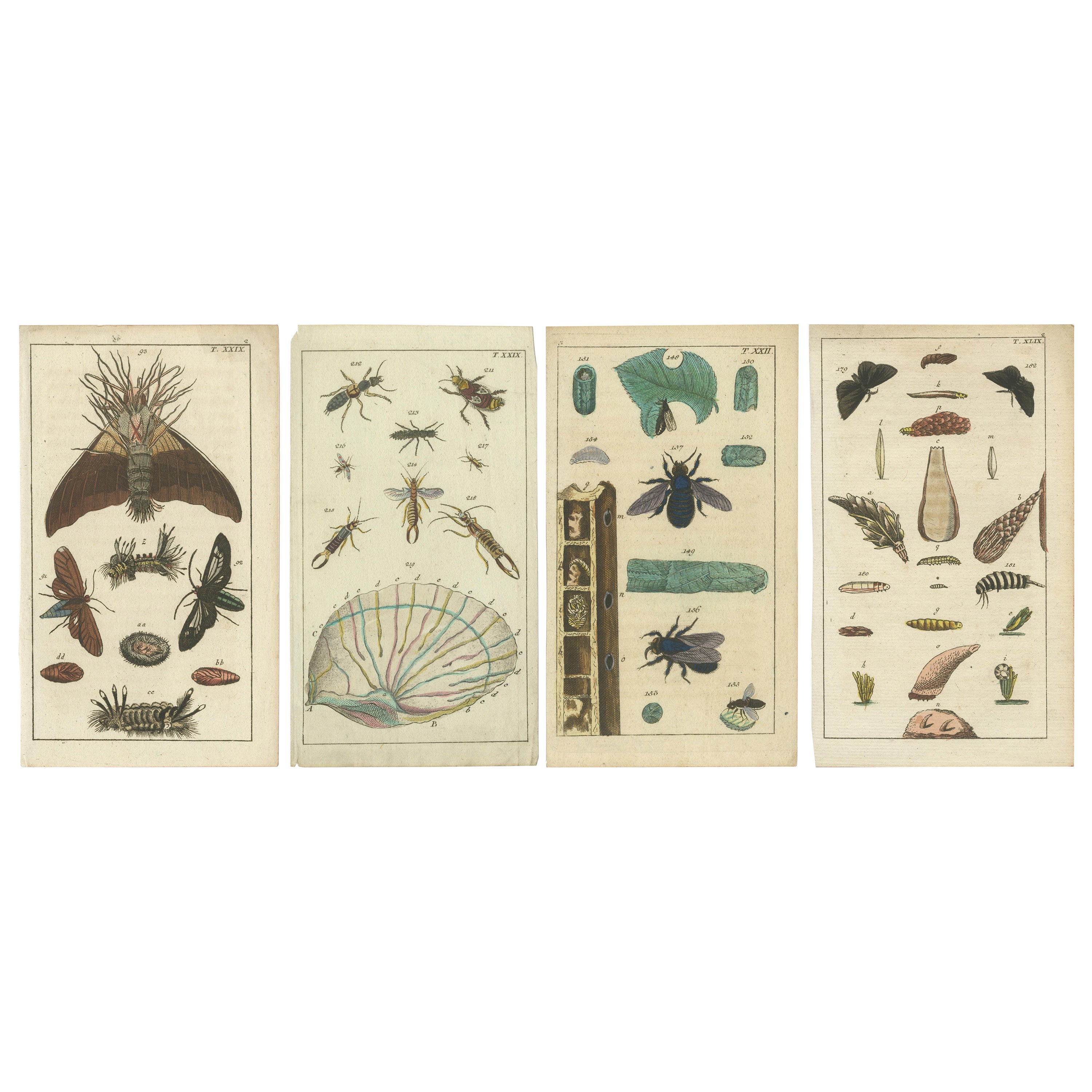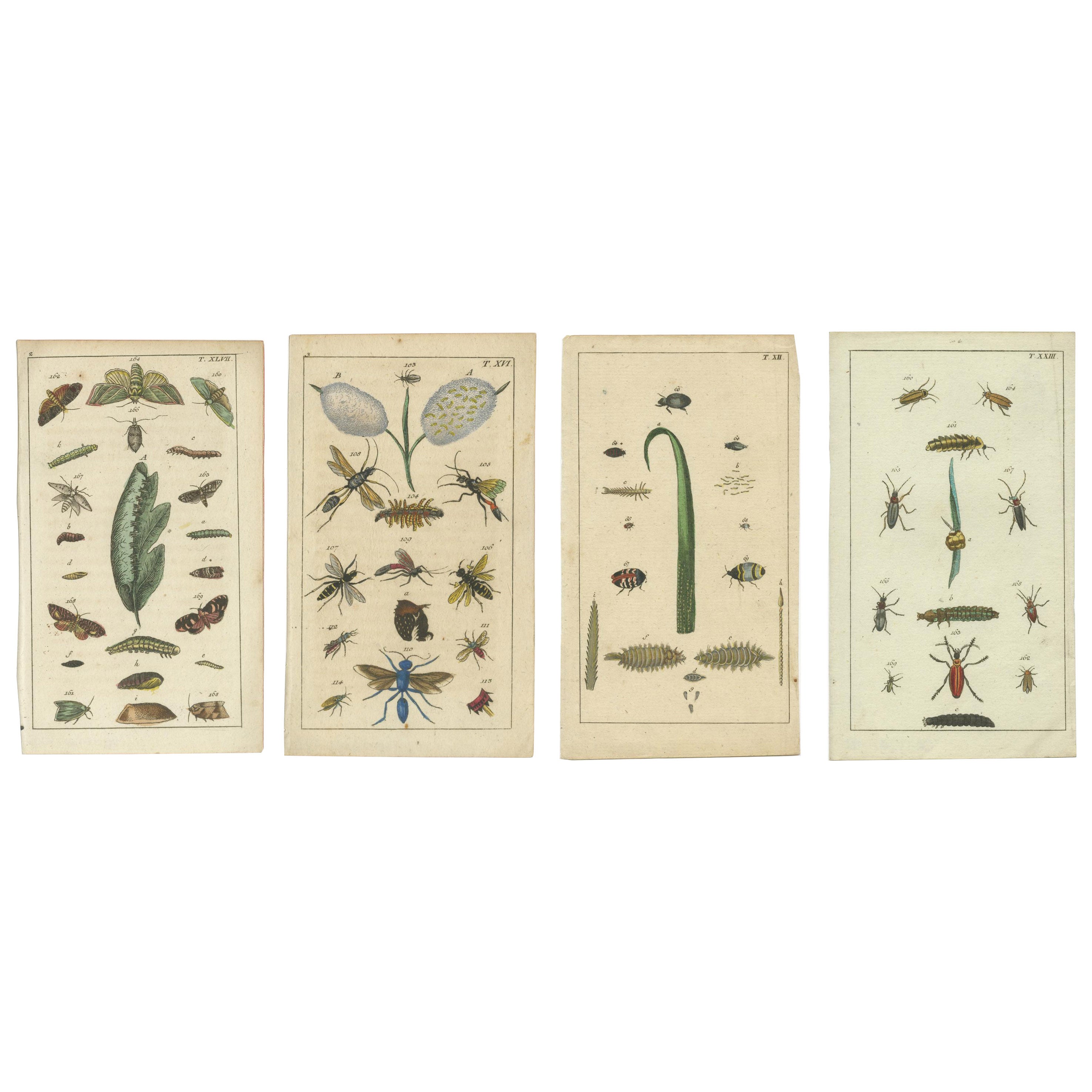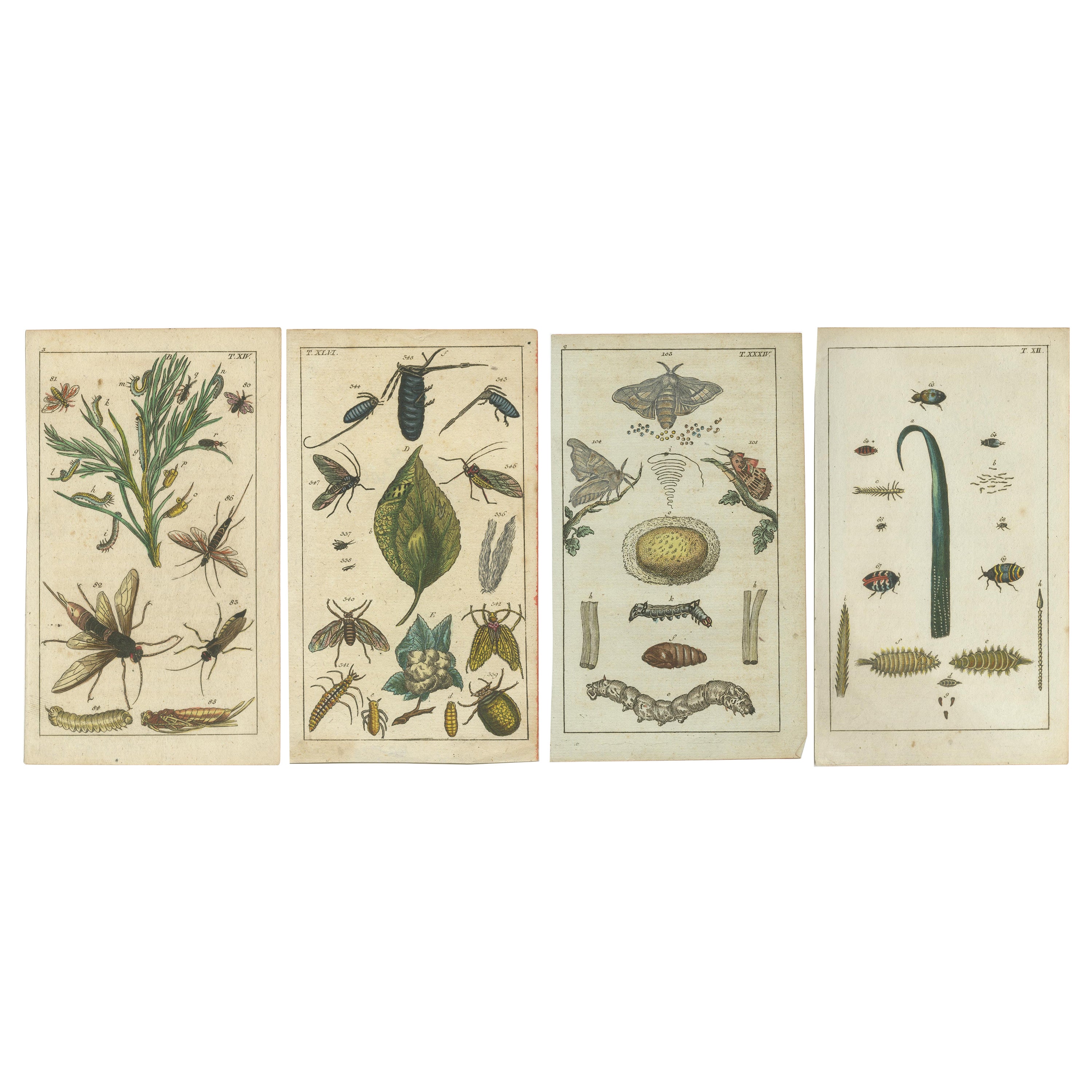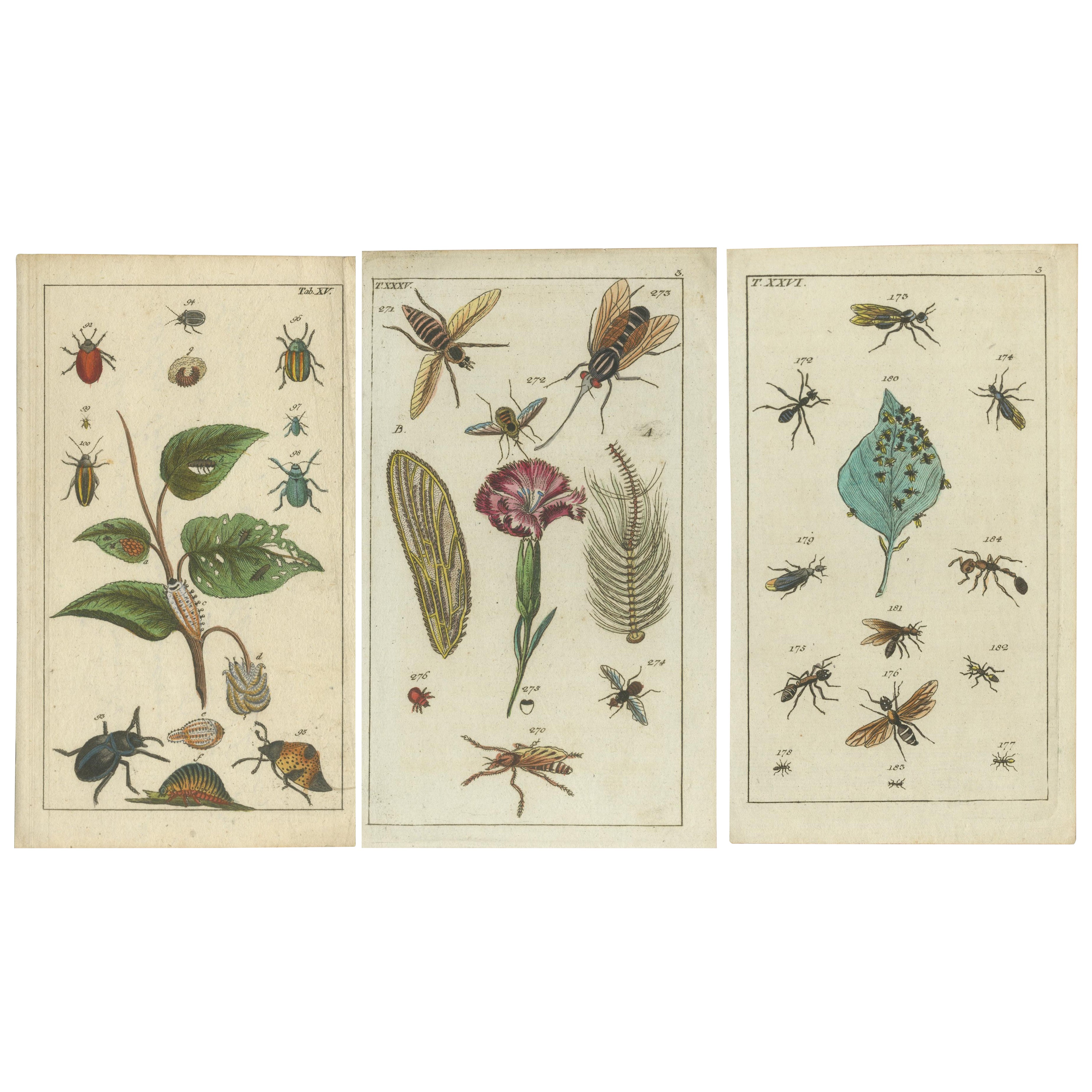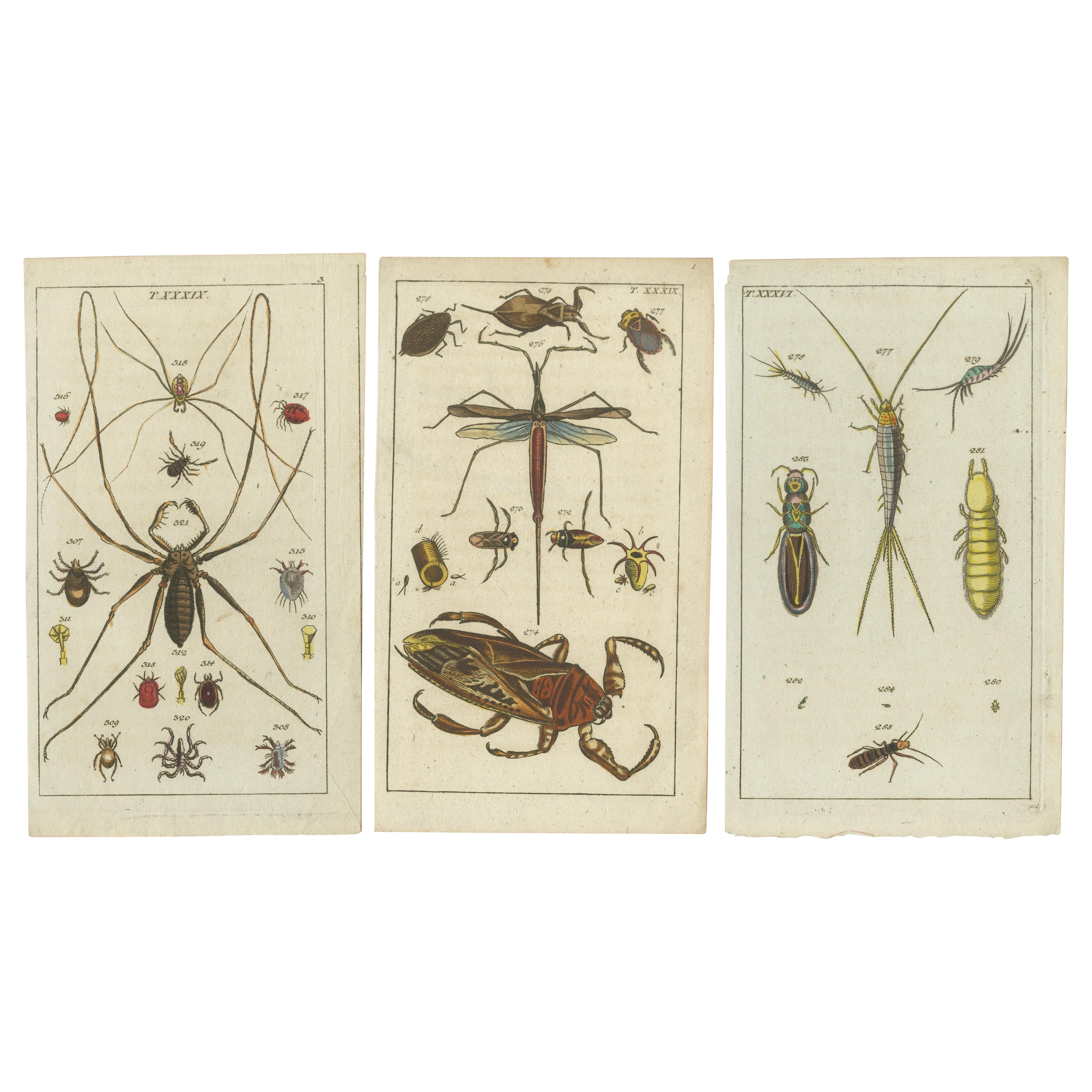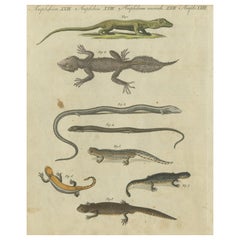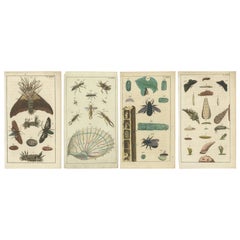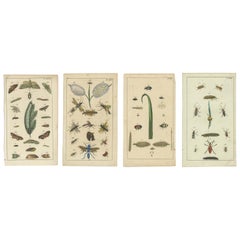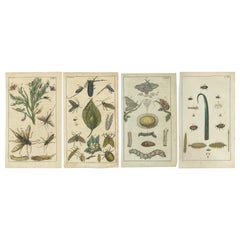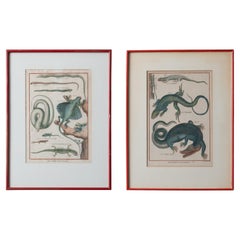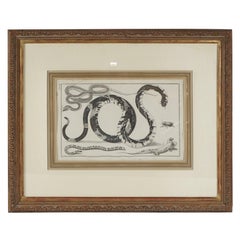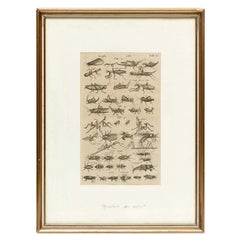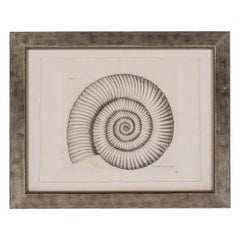Items Similar to The Wonders of Nature: Exquisite 18th Century Engravings of Reptiles and Insects
Want more images or videos?
Request additional images or videos from the seller
1 of 8
The Wonders of Nature: Exquisite 18th Century Engravings of Reptiles and Insects
$258.80
$323.5020% Off
£192.66
£240.8220% Off
€216
€27020% Off
CA$354.49
CA$443.1120% Off
A$394.27
A$492.8420% Off
CHF 205.88
CHF 257.3420% Off
MX$4,797.85
MX$5,997.3120% Off
NOK 2,629.35
NOK 3,286.6820% Off
SEK 2,465.86
SEK 3,082.3320% Off
DKK 1,644.33
DKK 2,055.4220% Off
Shipping
Retrieving quote...The 1stDibs Promise:
Authenticity Guarantee,
Money-Back Guarantee,
24-Hour Cancellation
About the Item
This print, titled "Reptiles and Insects of Various Parts of the World," is an 18th-century engraved work issued around 1778 in London for Middleton. It features an array of meticulously detailed creatures, including a variety of insects such as a "Walking Leaf," a "Locust," and a "Plumed Moth," as well as reptiles like a "Young Crocodile just leaving the Egg" and a "Horn Serpent." Notably, it includes an illustration of a "Rattle Snake" and a "West Indian Spider," among others.
The print is framed within an ornate architectural border that includes floral motifs and vegetation swags, adding an element of elegance to the scientific illustrations. Despite the age of the print, it is described as being in good condition, with light uniform paper aging and some creasing around the edges, but overall it retains a fresh and appealing appearance.
Such prints were common in the period as a means of documenting and sharing knowledge about the natural world among European audiences, many of whom would never have the opportunity to see such creatures in person. They served educational purposes and often accompanied texts on natural history and geography. The accuracy and detail provided in these prints reflect the scientific interest of the era in categorizing and understanding the diversity of life on Earth.
General identifications for the types of animals listed:
1. **Walking Leaf**: This refers to leaf insects or walking leaves, which are part of the family Phylliidae. They are known for their remarkable camouflage that closely resembles leaves.
2. **Centipede**: A group of arthropods belonging to the class Chilopoda, known for their multiple body segments, each with a pair of legs.
3. **Locust**: A type of grasshopper, typically from the family Acrididae, known for their swarming behavior.
4. **Plumed Moth**: Likely a moth with conspicuous feathery plumes, possibly from the family Pterophoridae or Alucitidae.
5. **Stick Insect**: Belonging to the order Phasmatodea, these insects are known for their elongated bodies that mimic the appearance of twigs and branches.
6. **Palmer Worm**: This term has historically been used to describe various caterpillar species that are known to cause damage to plants and crops.
7. **Elephant Beetle**: A large beetle of the genus Megasoma, known for its impressive size and horn-like projections on the males.
8. **Capricorn Beetle**: Likely referring to long-horned beetles, which belong to the family Cerambycidae.
9. **Scorpion**: A member of the order Scorpiones, characterized by their segmented tail tipped with a venomous stinger.
10. **Rattlesnake**: A venomous snake, genus Crotalus, characterized by a rattle at the end of its tail.
11. **Young Crocodile**: Referring to the juvenile form of any species within the family Crocodylidae.
12. **Black Butterfly of the West Indies**: A generic term that could refer to any number of butterfly species found in the Caribbean region.
13. **Horn Serpent**: This could refer to a snake with horn-like scales or protrusions on its head, though "horn serpent" often appears in mythology more than in zoology.
14. **West Indian Spider**: This could be any spider species that is native to the West Indies.
15. **Worm of Different Kinds**: This is quite generic and could refer to a variety of worm-like creatures, ranging from true worms to caterpillars or larvae.
These identifications are based on common names that might have changed since the 18th century when the print was made. The scientific understanding and classification of these animals have evolved, and common names can vary by region and over time.
- Dimensions:Height: 8.47 in (21.5 cm)Width: 12.21 in (31 cm)Depth: 0 in (0.02 mm)
- Materials and Techniques:Paper,Engraved
- Period:
- Date of Manufacture:circa 1778
- Condition:Good condition, with light uniform paper aging and some creasing around the edges, but overall it retains a fresh and appealing appearance.
- Seller Location:Langweer, NL
- Reference Number:Seller: BG-13597-391stDibs: LU3054337815292
About the Seller
5.0
Recognized Seller
These prestigious sellers are industry leaders and represent the highest echelon for item quality and design.
Platinum Seller
Premium sellers with a 4.7+ rating and 24-hour response times
Established in 2009
1stDibs seller since 2017
2,508 sales on 1stDibs
Typical response time: <1 hour
- ShippingRetrieving quote...Shipping from: Langweer, Netherlands
- Return Policy
Authenticity Guarantee
In the unlikely event there’s an issue with an item’s authenticity, contact us within 1 year for a full refund. DetailsMoney-Back Guarantee
If your item is not as described, is damaged in transit, or does not arrive, contact us within 7 days for a full refund. Details24-Hour Cancellation
You have a 24-hour grace period in which to reconsider your purchase, with no questions asked.Vetted Professional Sellers
Our world-class sellers must adhere to strict standards for service and quality, maintaining the integrity of our listings.Price-Match Guarantee
If you find that a seller listed the same item for a lower price elsewhere, we’ll match it.Trusted Global Delivery
Our best-in-class carrier network provides specialized shipping options worldwide, including custom delivery.More From This Seller
View AllFascinating 1805 Hand-Colored Engraving of Amphibians and Reptiles
Located in Langweer, NL
Fascinating 1805 Hand-Colored Engraving of Amphibians and Reptiles from Bertuch
This intricate hand-colored engraving is taken from Friedrich Justin Bertuch’s *Porte-Feuille des E...
Category
Antique Early 1800s Prints
Materials
Paper
Rare Antique Natural History Prints: Fascinating Insects and Life Cycles, 1832
Located in Langweer, NL
Title: Rare Antique Natural History Prints: Fascinating Insects and Life Cycles
Description:
This set of four small original antique prints from 1832 offers an extraordinary gli...
Category
Antique 1830s Prints
Materials
Paper
Small and Rare Natural History Prints Featuring Insects and Plants, 1832
Located in Langweer, NL
Title: Rare 19th-Century Natural History Prints Featuring Insects and Plants
Description: This set of four original antique prints offers a captivating glimpse into the rich detail ...
Category
Antique 1830s Prints
Materials
Paper
Exquisite Antique Natural History Prints: Insects, Larvae, and Life Cycles, 1832
Located in Langweer, NL
Title: Exquisite Antique Natural History Prints: Insects, Larvae, and Life Cycles
Description: This set of four original antique prints from 1832 is a captivating exploration of ...
Category
Antique 1830s Prints
Materials
Paper
Antique Insect Prints: Small Vibrant Engravings of Bugs, Leaves & Flowers, 1832
Located in Langweer, NL
Rare Antique Insect Engravings: 19th-Century Natural History Trio with Vibrant Colors
This set of three original antique engravings originates from Gottlieb Tobias Wilhelm’s cel...
Category
Antique 1830s Prints
Materials
Paper
Arachnid & Insect Engravings: Stunning Hand-Colored Natural History Art, 1832
Located in Langweer, NL
Rare Antique Natural History Prints: Arachnids and Insects in Stunning Detail
This set of three small original antique engravings from 1832 showcases the fascinating world of arac...
Category
Antique 1830s Prints
Materials
Paper
You May Also Like
Robert Bénard - Lizard Engravings, c.1798
By Robert Benard
Located in Savannah, GA
Robert Bénard
(French, 1734-1794)
Original hand-colored copperplate engravings published in ‘Tableau Encyclopedique et Methodique …’. by M. L’Abbe Bonnaterre, 1789
sight: 7 by 10 i...
Category
Antique 1790s French Prints
Materials
Glass, Wood, Paper
$1,200 / set
Four Framed Early 19th Century Large Folio Engravings of Lizards, Snakes & Bats
Located in Hudson, NY
This set of four engravings in detail with compendium landscape details and related prey animals are done in steel engraved plates and come from the first quarter of the 19th century...
Category
Antique Early 19th Century Prints
Materials
Glass, Wood, Paper
Early XXth Century French Engraving of Insects
Located in Barcelona, ES
"Early XXth Century French Engraving of Insects"
Origin: France, early XXth century
Art Form: Engraving
Subject: Insects
Transport yourself to the fascinating world of ...
Category
20th Century French Mid-Century Modern Prints
Materials
Paper
18th Century Copper Engraving by Lister
Located in Houston, TX
Framed large black and white engraving of sea shells by Lister. This very rare copper engraving is from Martin Lister's work Historiae sive synopsis m...
Category
Antique 18th Century English Decorative Art
Materials
Paper
Original Vintage Print of Arthropods. French, C.1920
Located in St Annes, Lancashire
Great image of anthropods
Unframed. It gives you the option of perhaps making a set up using your own choice of frames.
Chromo-lithograph
Published, C.1920
Free shipping.
Category
Vintage 1920s French Folk Art Prints
Materials
Paper
Set of Twelve 18th Century Zoological Engravings
Located in Shipston-On-Stour, GB
A rare 18th Century set of 12 handcoloured copperplate engravings of Zoological studies, featuring primates of varying species. Each colourfully executed with a naive charm, and Lati...
Category
Antique 1770s German Other Prints
Materials
Glass, Wood, Paint, Paper
More Ways To Browse
Snake Engraving
Life Size Elephant
Antique Rattles
Elephant Horn
18th Century Walking Stick
Snake Walking Stick
Tamil Nadu
Thai Dragons
Thai Statue Wood
Tibetan Buddha Statue
Tiffany Glass Mirror
Tubular Chrome Shelf
Unglazed Clay Jar
Used Metal Storage Bins
Vaseline Uranium Glass
Versaille Urns
Vintage 329
Vintage Banana Leaf
